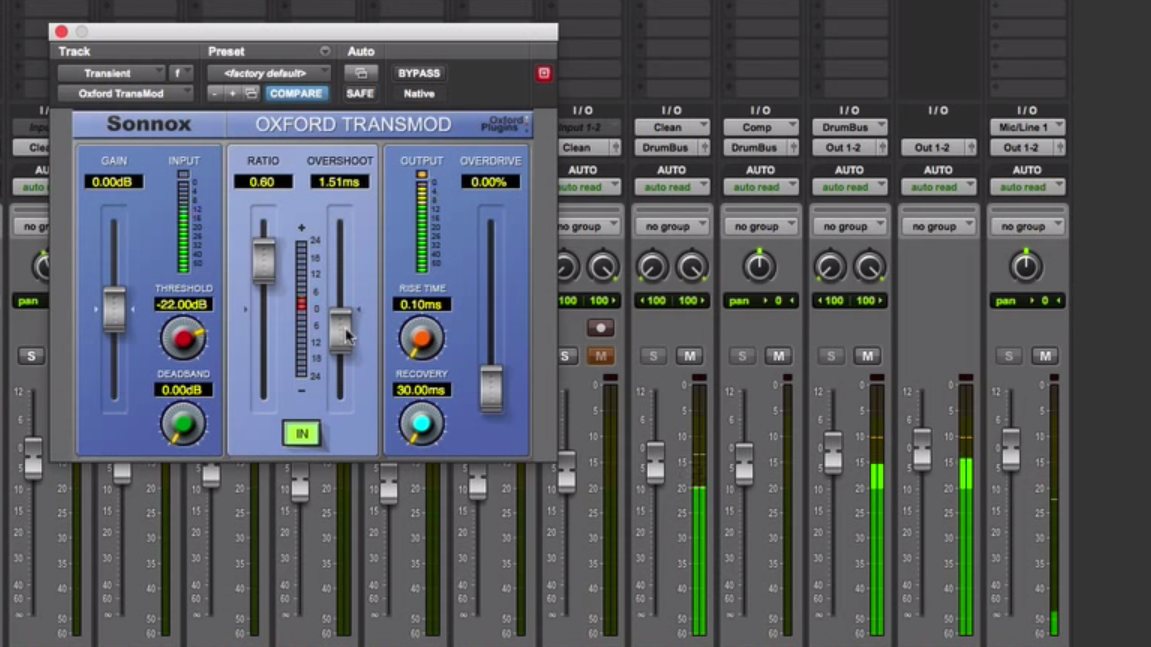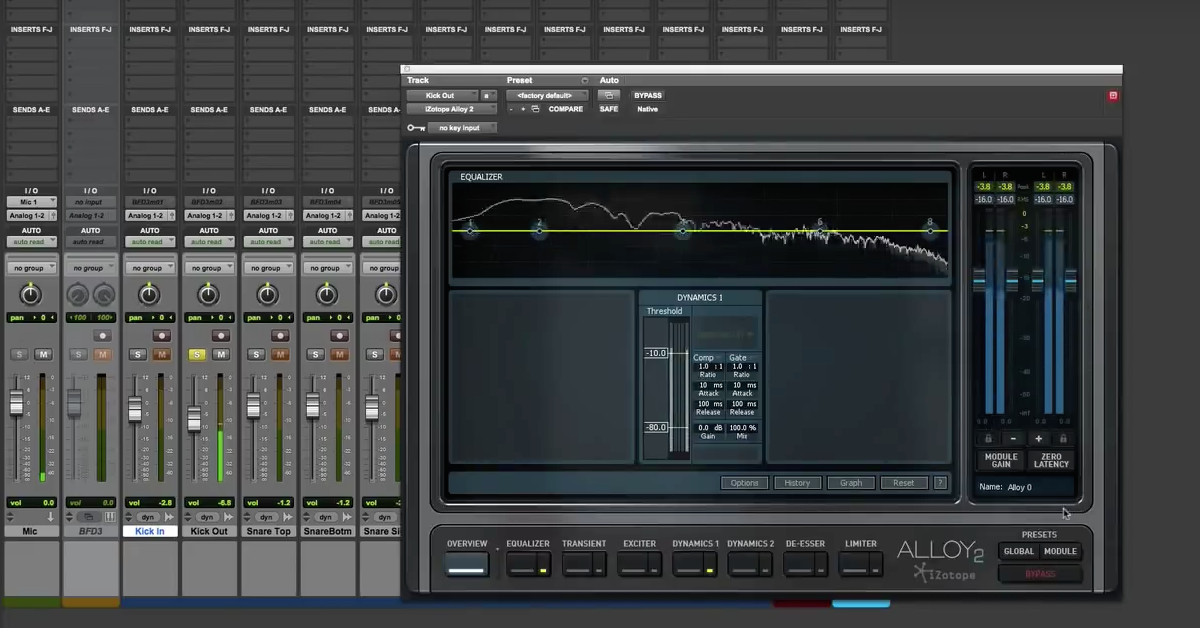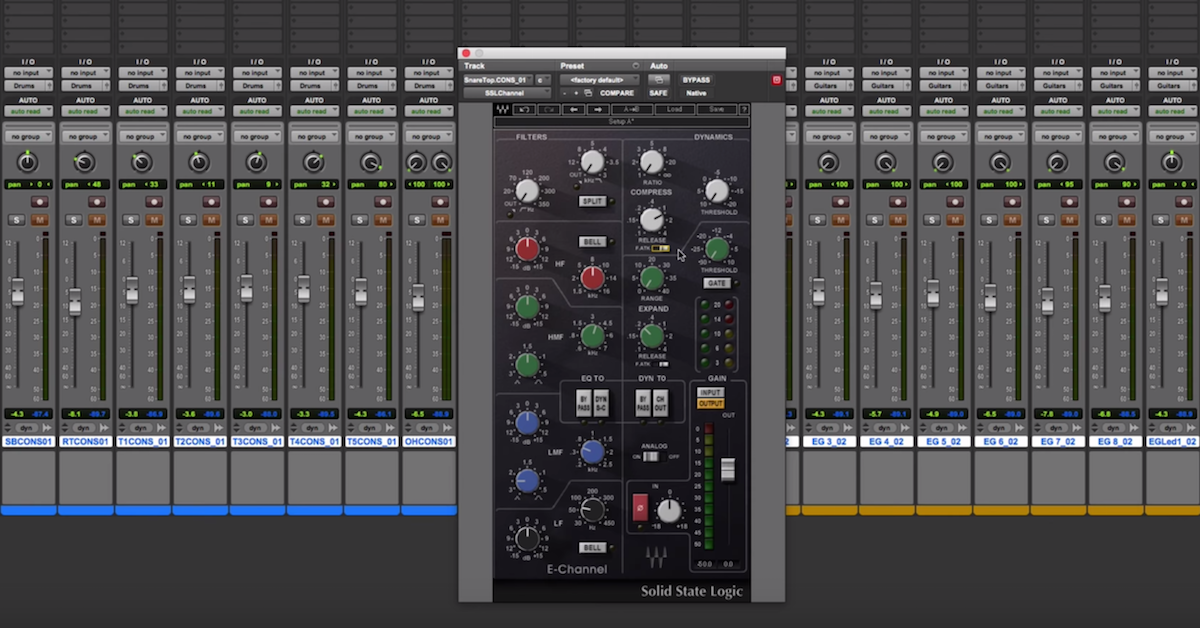How to Independently Process Snare Drum Transients and Sustain
I’ve got a video for you all about parallel processing a snare drum. The idea is to think about each drum hit as being the transient part and the sustain part. We want to divide those things up and process them in parallel independently.
So here I’m working on a song from the band Lines in the Sky, and the song is called Parallel Travel. It sounds like this.
[mix]
So in the rough mix, things are sounding pretty good already, but what I like to do is focus on the snare drum and enhance it a little bit and help it cut through.
So as of right now, I’ve got my basic mix going. Simple processing over here, kick, snare, overheads and so on for my drum mix.
On the snare track what I’ve done is just some simple subtractive equalization to tidy things up and basic compression. Very small amounts of compression, really just to control the overall level. So here’s what the snare drum sounds like on its own.
[snare]
So the thing I’m going to do next is to create that parallel processing. I’m going to do that in a simple way. Just duplicate this track.
Now we’ve got two tracks going side-by-side that are identical as of right now. The same plug-in settings and so on on each track. So what I’m going to do is just focus on the first track and think of the one on the left as being — focusing on the transient. Trying to pull out and just use the transient.
The one on the right then will be all about the sustain. So first up, simple way to do this is just pull up a gate. I’ll use the stock expander/gate from Pro Tools, but you can use any gate to do this.
Here I’ll just focus on it, dial in some of the settings so that you’re really just getting the first few ten, fifteen, twenty milliseconds of the snare.
[snare, adjusting gate]
That’s actually going to be perfect.
Then on the other track it’s going to be all about the sustain. So what I’m going to do here is use a transient designer style plug-in. There’s a bunch of different ones from different companies. I’ll pull up a simple one here. This one is from Native Instruments, and it’s called the Transient Master, but they basically all have the same kind of controls and do a similar thing. You’ve got the attack setting, you’ve got the sustain setting, what I’m going to do is just roll off the attack all the way back so that we don’t have any of the attack, and then just bring up the sustain.
[snare, adjusting attack]
Now we can listen to both of these things together.
[snare, attack and sustain channels]
Now that we’ve divided it up, we can change the level if we like, the relative balance between them.
We can also add in additional plug-ins to process them. As an example, this is all up to your own creativity, I’m going to pull up here just the stock distortion plug-in on the transient part and see if I can make it cut through and really, really bite.
[snare, adjusting transient]
Now let’s focus on the sustain. Rather than just distorting it, the idea is you can just process these as completely different tracks.
So as an example, let me pull up a stock equalizer plug-in. This is just the EQ III seven-band. What I’m going to do here is try and enhance the body. The transient is all about making it sound sharp, the sustain is more about the body, so here is where I’ll enhance the low end.
[snare, adjusting sustain]
So this is a way you can give it more body and give it more of that low end, more of the tone of the drum without kind of dulling out the transients.
So let’s listen to these two things together.
[snare]
Now in the context of the mix…
[mix]
So hopefully you can see that after you divide up the signal into the transient and sustain, you have unlimited creative potential with how you want to process each of these things. Throw one kind of processor on the transient, throw another on the sustain.
I gave you two examples, but there’s really all kinds of things you can do to really tailor and sculpt the sound for your particular mix.
So that’s all I’ve got. Until next time, take care guys.






